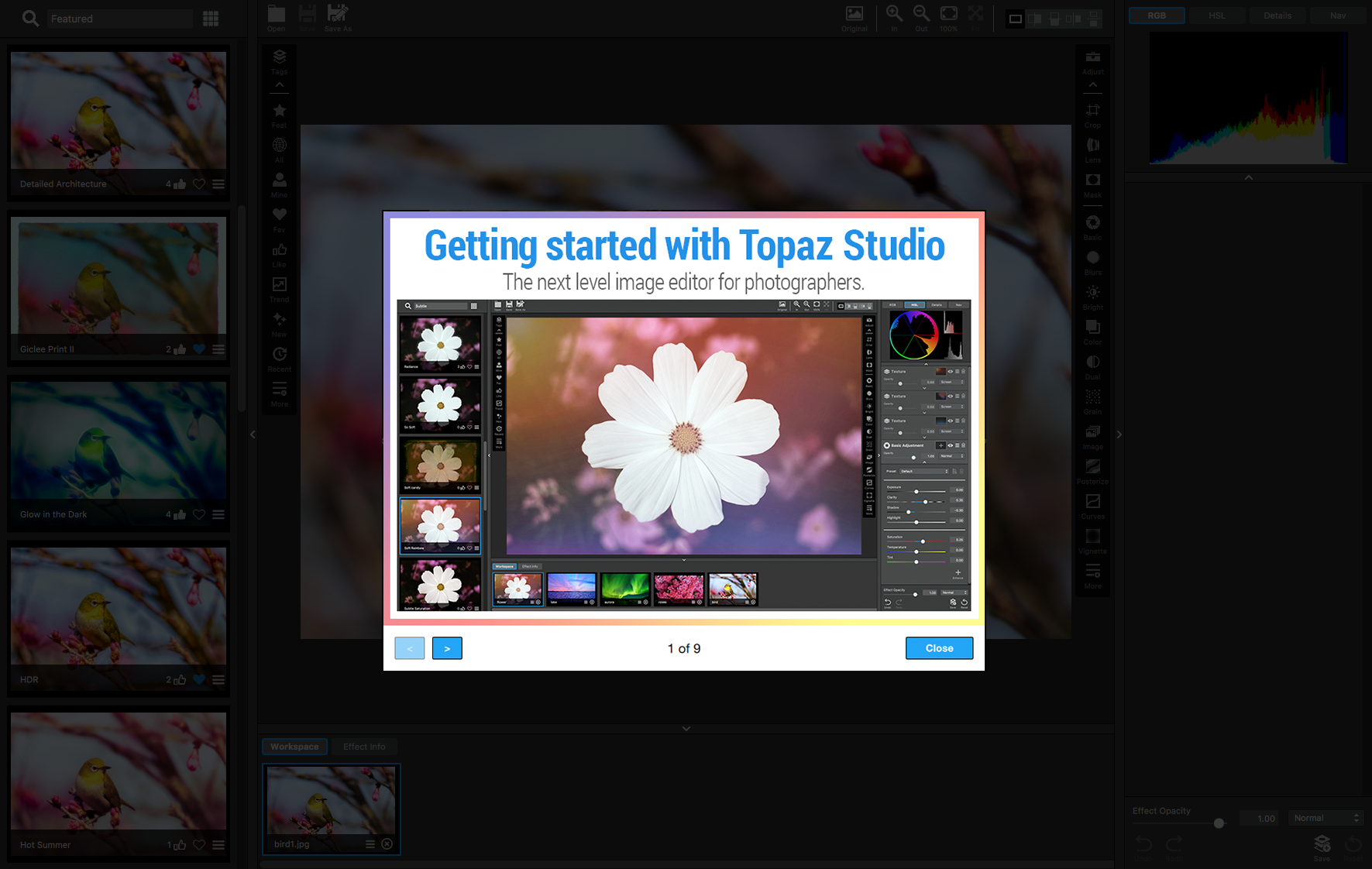
As with DxO PhotoLab, there’s no importing, nor are there modes for doing things like organizing, adjusting, editing, and outputting, like you find in Lightroom.
#Topaz studio logo how to
It starts you out with a simple four-panel tutorial that shows how to apply key adjustments, use effects (or Looks), and add masks. Topaz Studio’s interface is far simpler than that of most other pro photo software. If your account doesn’t have a purchase associated with it, you can start a free, 30-day trial just by entering an email address. As with most other big apps, Topaz Studio requires you to log into an account to use it.

At 630MB, the installer isn’t a small download, but that’s not uncommon.

The Topaz Studio installer not only lets you choose where on your hard drive you want the program located, but also where you want to save its support files and user-created files. Adobe Photoshop and Lightroom can be had for a $9.99-per-month subscription, but you never stop paying if you want to keep using them. For comparison, CyberLink PhotoDirector charges the same $99.99 but is also available as a $3.42-per-month subscription with a continual flow of new effects. Oddly, you can’t install the popular GigaPixel AI plug-in Topaz Studio. Existing plug-ins range in price from $79 to $99. You can get a free copy if you've already purchased Topaz effects worth $99 or more. There’s no subscription requirement or option, as was the case for the app's predecessor.

You can buy a license directly from Topaz Labs’ website for $99.99.


 0 kommentar(er)
0 kommentar(er)
